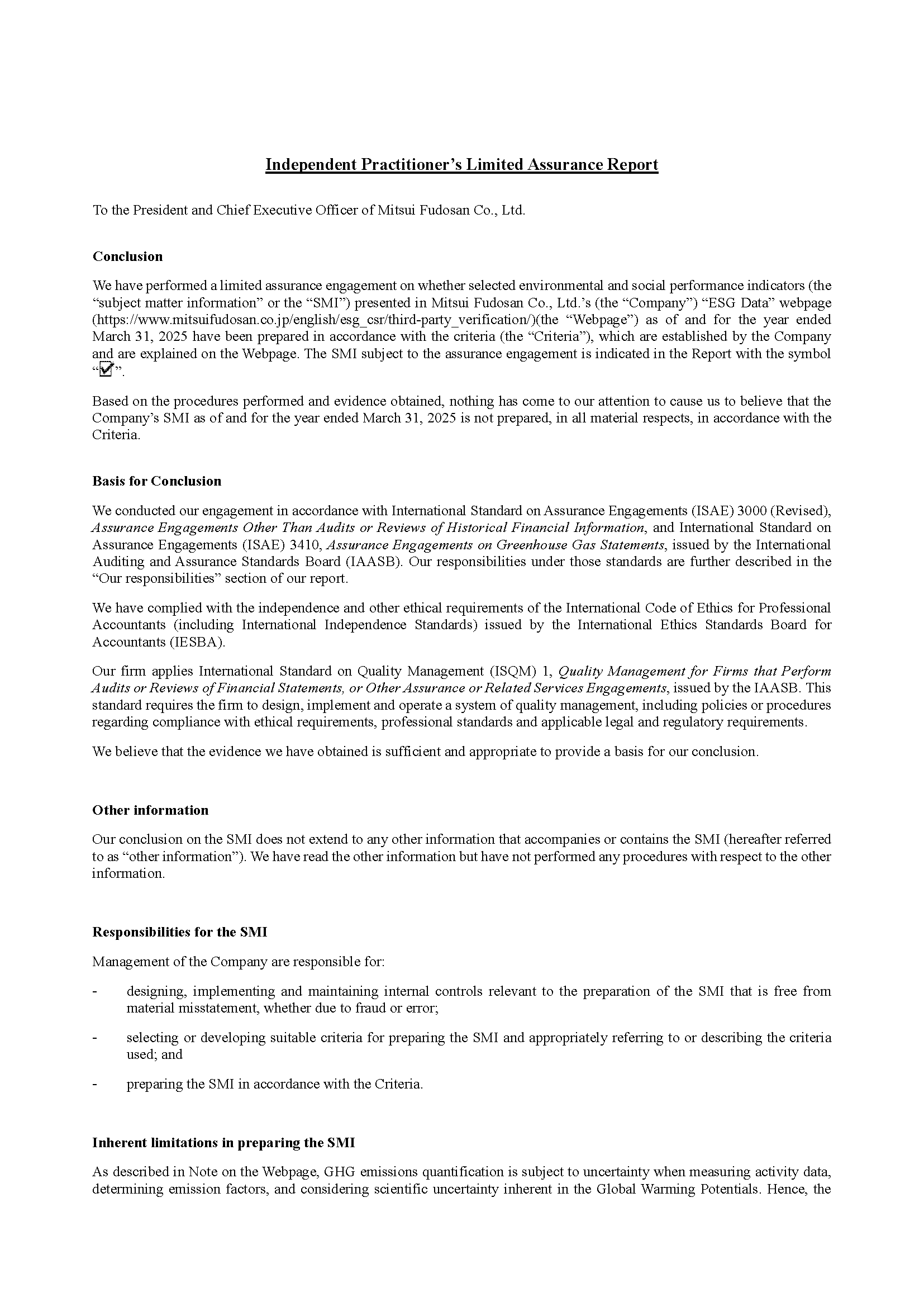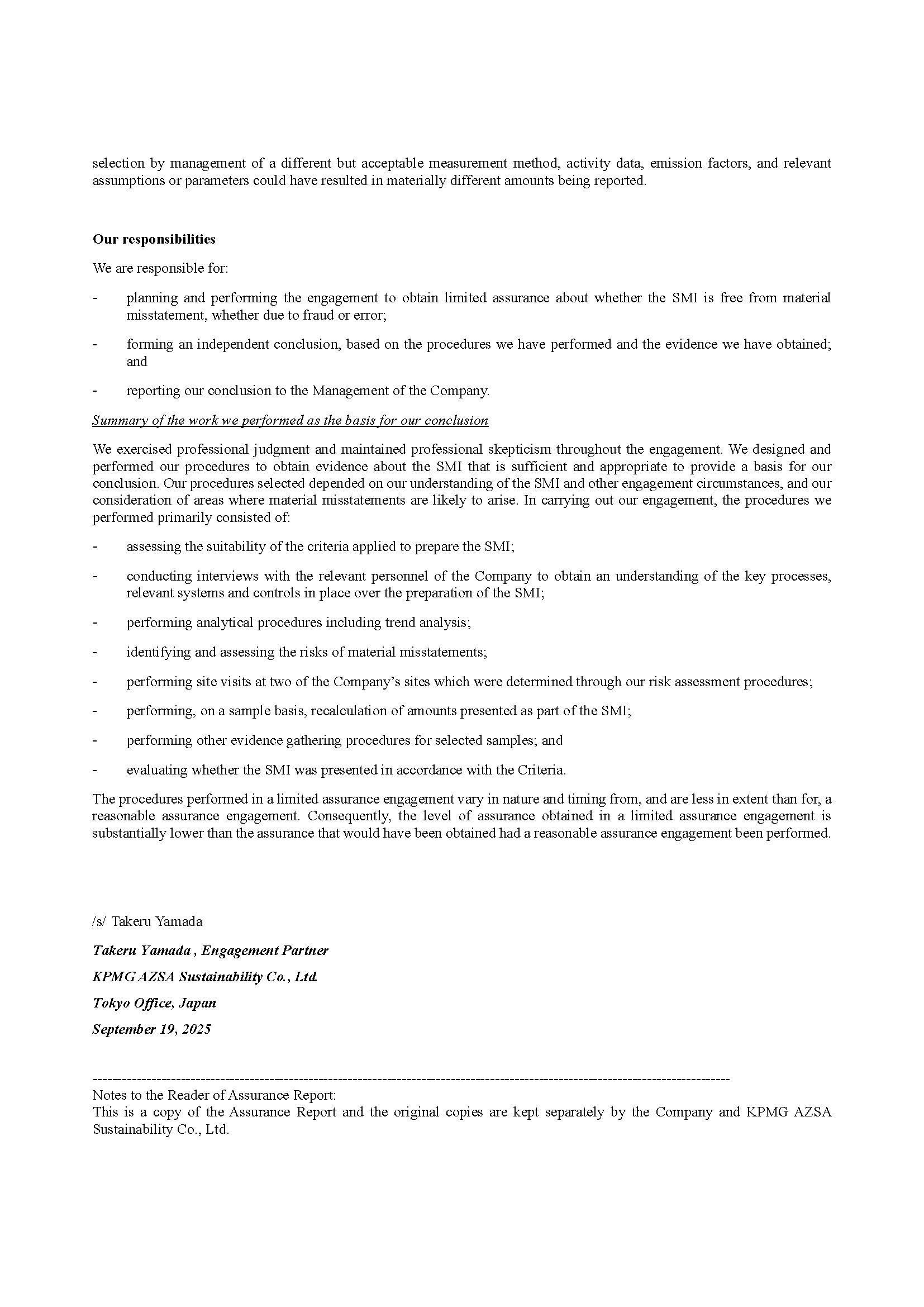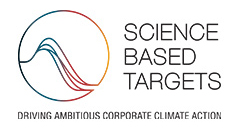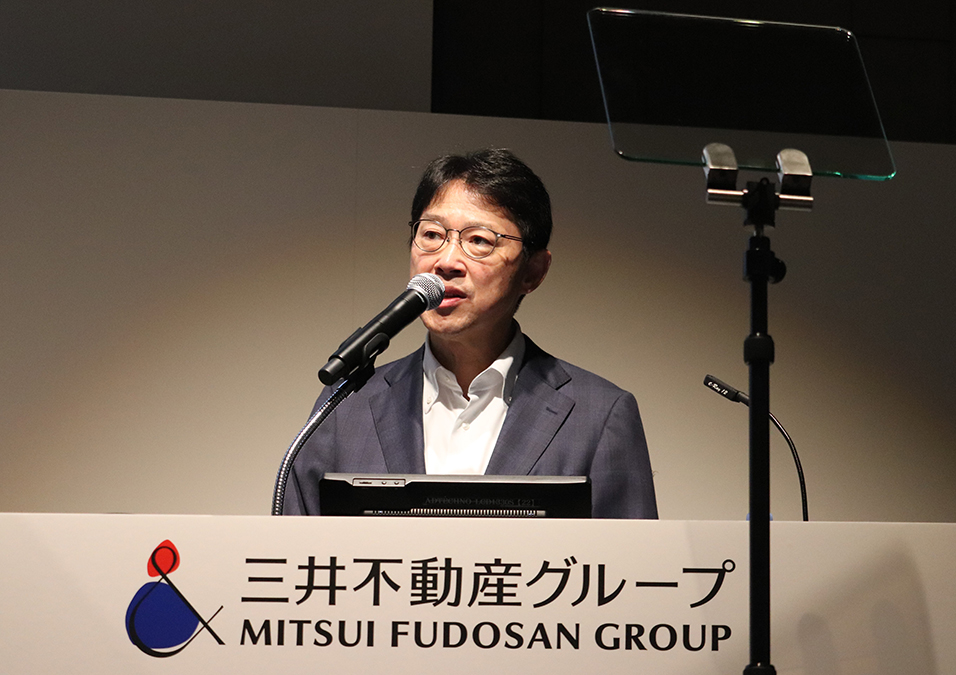Notes:
1. The scope of CO₂ emissions aggregation includes facilities owned or leased by Mitsui Fudosan and its consolidated subsidiaries that either own buildings or have 100 or more employees, as well as a company with high CO₂ emissions (Mitsui Fudosan TG Smart Energy Co., Ltd.).
2. Scope 1 and Scope 2 are calculated using emission factors in line with the Act on Promotion of Global Warming Countermeasures and other relevant methods, based on the amount of energy used (actual figures or estimates) during each fiscal year
・Up to FY2021: Basic emission factors
・FY2022 and 2023: Post-adjustment emission factors
・FY2024: Basic emission factors
In addition, for FY2020 and before, some figures are estimates calculated by applying the base unit for each business division to the total floor area.
3. Scope 3-1 is calculated from the sales cost price part in the relevant fiscal year and services provided part of real estate for sale that was sold in that fiscal year.
The sales cost price part of real estate for sale that was sold in the relevant fiscal year (excl. land) is calculated by multiplying figures given in the emissions unit value database, which details Ministry of the Environment emission factors used to estimate an organization’s greenhouse gas or other emissions through its supply chain.
The services provided part during the relevant fiscal year is calculated by multiplying accounts that exceeded 1% of the total monetary amount covered in Scope 3-1 by emission factors determined by the Ministry of the Environment.
4. Scope3-2 is calculated by multiplying the amount of increase in Property, plant and equipment excluding land and construction in progress by an emission factors determined by the Ministry of the Environment.
5. Scope 3-3 is calculated by multiplying the amount of energy totaled in Scope 1 and Scope 2 by emission factors determined by the Ministry of the Environment.
6. Scope 3-5 is calculated by multiplying the amount of general waste (partially including estimated figures) and industrial waste by emission factors determined by the Ministry of the Environment.
The emission factors applied for each fiscal year are as follows:
・Up to FY2022: AIST IDEA Ver. 2.3
・FY2023: AIST IDEA Ver. 3.3 (IPCC 2021 AR6)
・FY2024: AIST IDEA Ver. 3.4 (IPCC 2021 without LULUCF AR6)
7. Scope 3-6 is calculated by multiplying the number of employees of the Mitsui Fudosan Group by emission factors determined by the Ministry of the Environment.
8. Scope 3-7 is calculated by multiplying the number of employees of the Mitsui Fudosan Group by the number of working days for Mitsui Fudosan and emission factors determined by the Ministry of the Environment.
9. Scope 3-11 is calculated by multiplying the area, etc., of real estate sold during the fiscal year by the annual emissions unit value and the remaining service life.
From FY2024, the post-sale scenario has been revised to reflect figures that take into account trends in national electricity emission factors based on the IEA’s World Energy Outlook 2024. In addition, for certain properties for which data such as energy consumption cannot be obtained, estimated values have been used in the calculations.
10. Scope 3-12 is calculated by multiplying the area of real estate sold in the relevant fiscal year by emission factors determined by the Ministry of the Environment.
11. Scope 3-13 is calculated using emission factors and other methods in line with the Act on Promotion of Global Warming Countermeasures, based on the amount of energy used (whether actual figures or estimates) in the relevant fiscal year. Some figures are estimates calculated by considering a base unit (of floor area) for each business division.


































